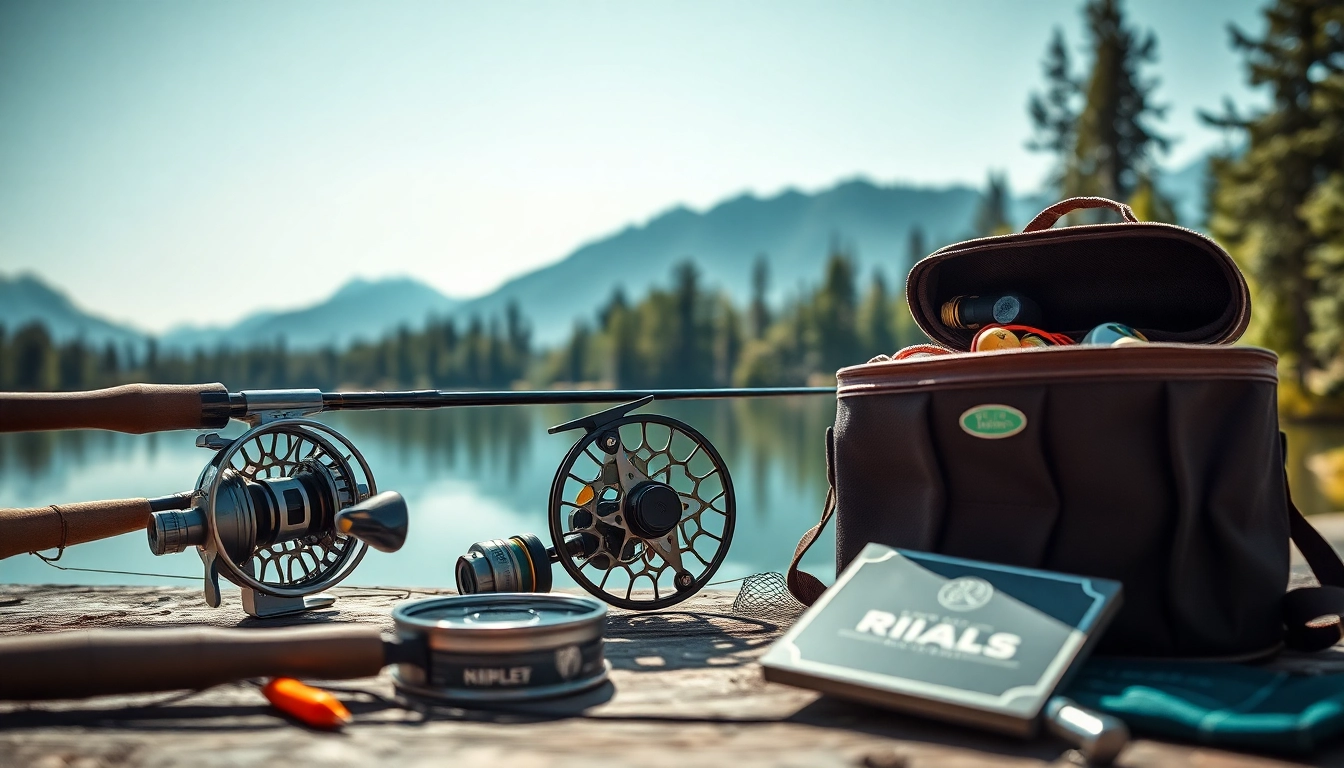
Introduction to Fly Fishing Accessories
For both novice and experienced anglers, fly fishing is an art that requires precision, skill, and the right selection of tools. Among these tools, the importance of high-quality fly fishing accessories cannot be overstated. They play a crucial role in determining the success of your fishing trips and ensuring a satisfying and enjoyable experience on the water.
What Are Fly Fishing Accessories?
Fly fishing accessories encompass a wide range of equipment that complements the core components of fly fishing, such as rods, reels, and flies. These accessories enhance the functionality of your gear, improve your fishing technique, and help you tackle various environmental conditions effectively. From tippet material and fly boxes to tools like nippers and floatants, each item serves a specific purpose and contributes to the overall success of your fishing experience.
Importance of Quality Gear
Investing in quality fly fishing accessories is essential for several reasons. Firstly, these accessories can significantly affect your presentation, helping to ensure that your fly behaves as it should in the water. Secondly, durability matters; high-quality items last longer, saving you money in the long run. Thirdly, proper accessories can increase your comfort on the water, allowing you to devote your energy to the enjoyment of the sport rather than dealing with faulty gear.
Overview of Common Types
Common categories of fly fishing accessories include:
- Line management tools: Such as indicators and floatation aids.
- Storage solutions: Including fly boxes and tackle bags.
- Maintenance tools: For keeping gear in optimal condition.
- Safety equipment: Like personal flotation devices (PFDs) and first-aid kits.
Each of these categories offers specific accessories that can significantly enhance your fishing experience.
Essential Fly Fishing Accessories
Rods and Reels
The rod and reel are the backbone of any fly fishing setup. However, the right accessories can dramatically alter the effectiveness of these two fundamental components. For instance, having the appropriate reel backing and line size ensures that you can handle the species you are targeting.
Rods: The right fly rod should be matched to your chosen fishing technique, whether that be dry-fly fishing or nymphing. Rods come in various weights and lengths, affecting how you cast and present your flies. Premium rods offer lighter constructions yet provide enhanced sensitivity and power.
Reels: A good reel not only holds your line but also provides drag systems, allowing you to better manage the fight with a fish. Look for reels that balance well with your rod and suit the species you’re targeting.
Lines, Leaders, and Tippets
Choosing the right fly lines, leaders, and tippets is fundamental for presenting your fly effectively. Fly lines come in a variety of densities and tapers, each designed for specific fishing scenarios.
- Fly Lines: These can be floating, sinking, or intermediate, and picking the right one will depend on the type of water you’re fishing.
- Leaders: Leaders are lengthier lengths of line that transfer energy from your fly line to your fly, aiding in the presentation.
- Tippets: These are the final connection to your fly and should be chosen based on the fish species and patterns you are using for optimal stealth and presentation.
Flies: Types and Uses
The flies you choose can make or break your fly fishing experience. There are two main categories: dry flies and wet flies.
- Dry Flies: Meant to float on the water’s surface, these flies imitate adult insects that fish actively rise to eat.
- Wet Flies: These sink below the water line and simulate emerging insects or aquatic creatures that fish prey on beneath the surface.
Alongside these categories, pattern selection is critical; understanding local fish feeding habits will guide you in choosing the right flies for your fishing expeditions.
Choosing the Right Fly Fishing Accessories
Assessing Your Skill Level
Your skills as an angler should influence your choice of accessories. Beginners may benefit more from user-friendly tools that simplify the learning process, while experienced anglers might prefer specialized gear that enhances performance. As you develop your skills, you can gradually upgrade to more advanced accessories tailored to your evolving techniques.
Matching Gear to Fishing Conditions
Environmental factors such as water type, temperature, and weather conditions demand different accessories. For instance:
- Cold Water: In such conditions, sinking lines and heavier tippets may be necessary to reach deeper fish.
- Warm Water: Fish may be more active near the surface; thus, floaters and dry flies are advantageous.
- Fast Water: Use weighted flies and strong leaders to navigate turbulent currents.
Ultimately, aligning your gear with the fishing conditions will enhance your chances of success.
Budget Considerations and Value
While quality gear can be a significant investment, evaluating the value it brings to your fly fishing experience is essential. Consider the cost-per-use; if a particular accessory saves you time or enhances your success on the water, it may be worth the extra cost. Always weigh your budget against functionality—sometimes, mid-range accessories can outperform their higher-priced counterparts.
Care and Maintenance of Fly Fishing Accessories
Cleaning and Storing Equipment
Proper care and maintenance prolong the lifespan of your fly fishing accessories. After each trip, rinse your equipment with freshwater to remove any residue or salt. Store rods in protective cases and keep reels in cool, dry conditions to prevent corrosion.
Seasonal Maintenance Tips
As seasons change, so do the requirements for maintaining your fly fishing accessories. Before the start of each season, inspect lines for cracks, frays, or tangles, and replace any worn-out leaders and tippets. Reels may also require lubrication to ensure smooth functioning during future fishing endeavors.
Prolonging Lifespan of Accessories
Store accessories according to manufacturer recommendations, ideally in a temperature-controlled environment that minimizes exposure to moisture. Consider using UV protectors for sorting tools and flies to keep them from degrading over time. Proper handling will ensure you get the most use from your gear.
Advanced Fly Fishing Accessories and Techniques
Specialized Gear for Different Environments
As you explore diverse fishing environments—from freshwater streams to saltwater flats—you may encounter specific challenges that sophisticated accessories can address. Specialized gear like waders, boots, and packs tailored to unique aquatic environments can enhance your overall fishing capability.
Innovative Accessories for Enhanced Performance
Technology continues to evolve within the fly fishing industry, leading to innovative accessories that improve angler performance. Examples include digital devices for water temperature readings, smartphone apps for tracking catches, and changeable spool reels for quick line swaps. Embracing these innovations can drastically affect your fly fishing success.
Technique Upgrades with New Gear
Finally, consider that advanced fishing techniques often require specific accessories that accommodate these methods. For instance, if you’re venturing into multi-fly setups or engaging in specific nymphing styles like European nymphing, your choice of indicators, weights, and flies will need to adapt accordingly. Investing in the right equipment can elevate your technique and lead to healthier catch rates.






